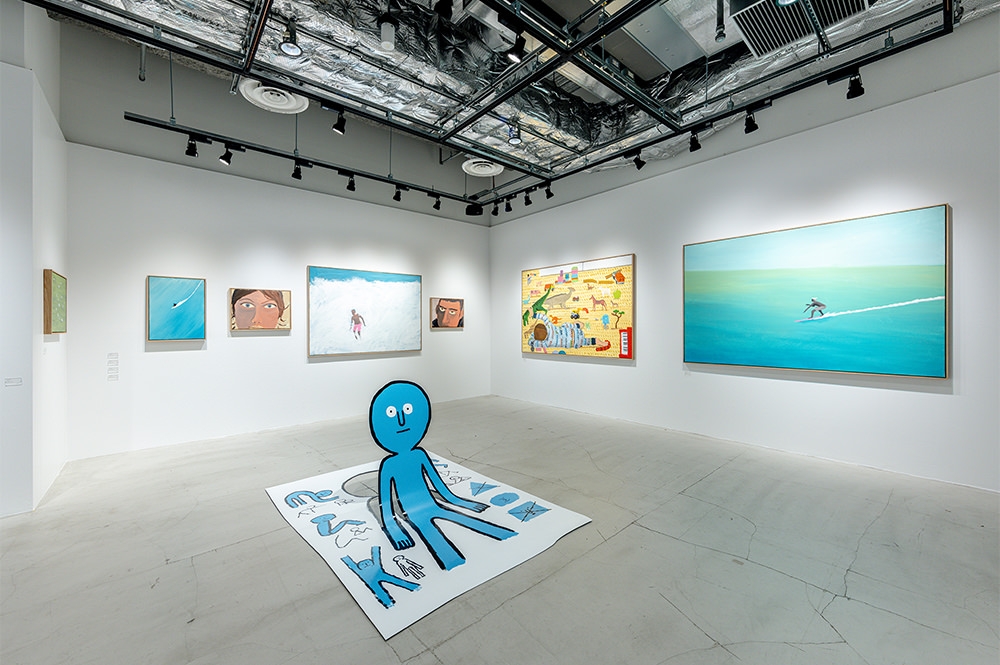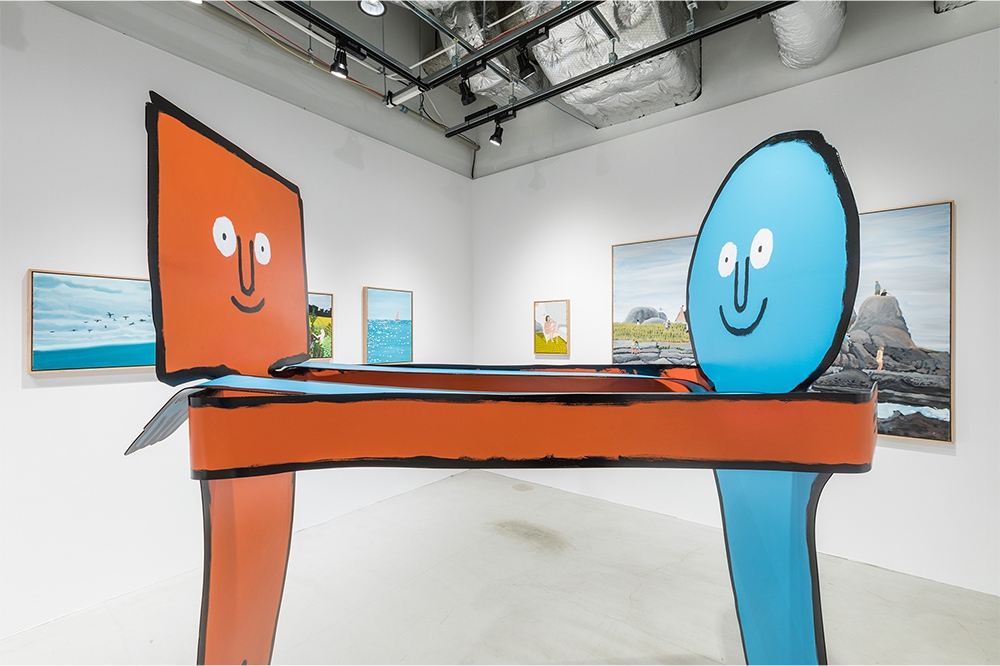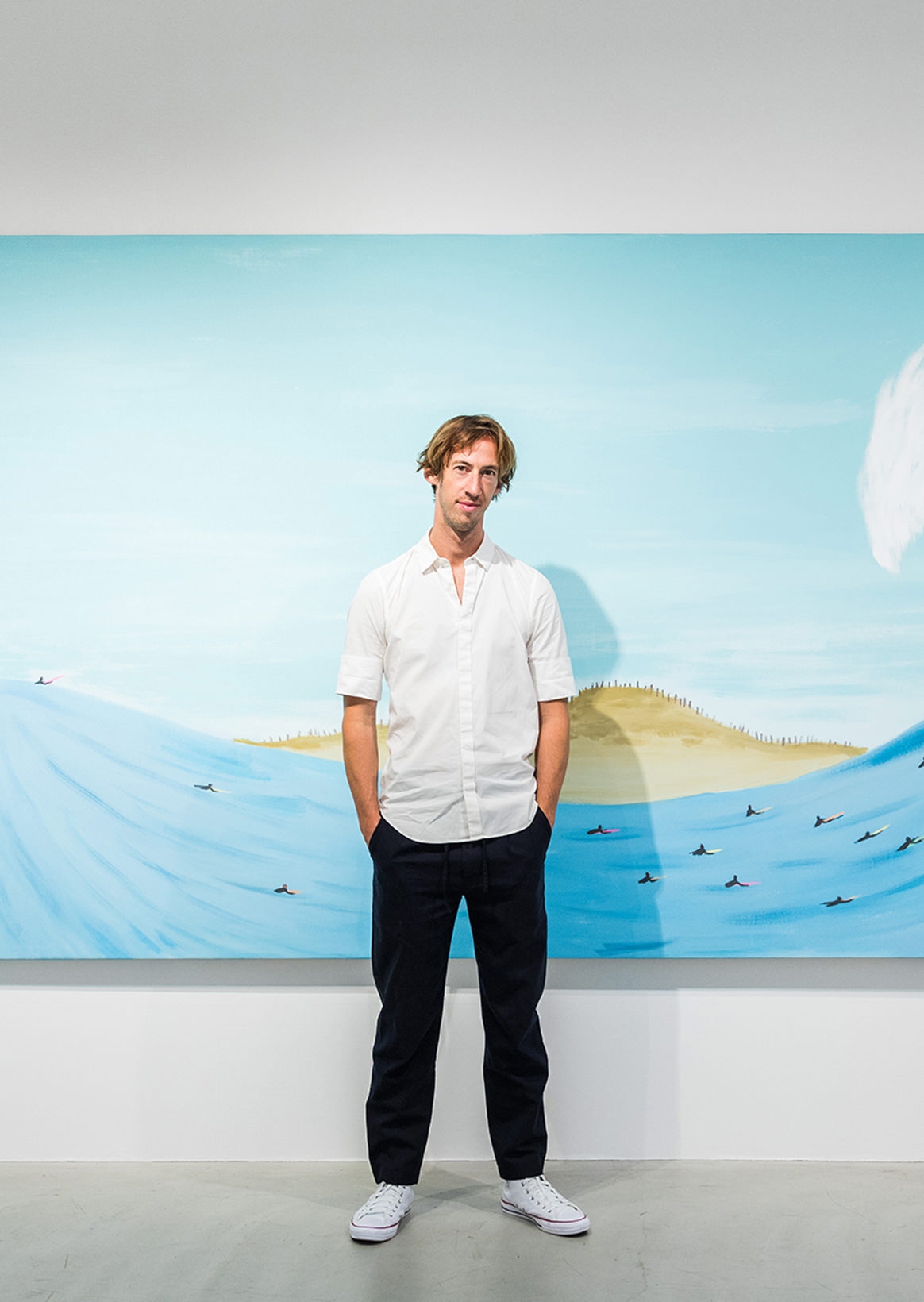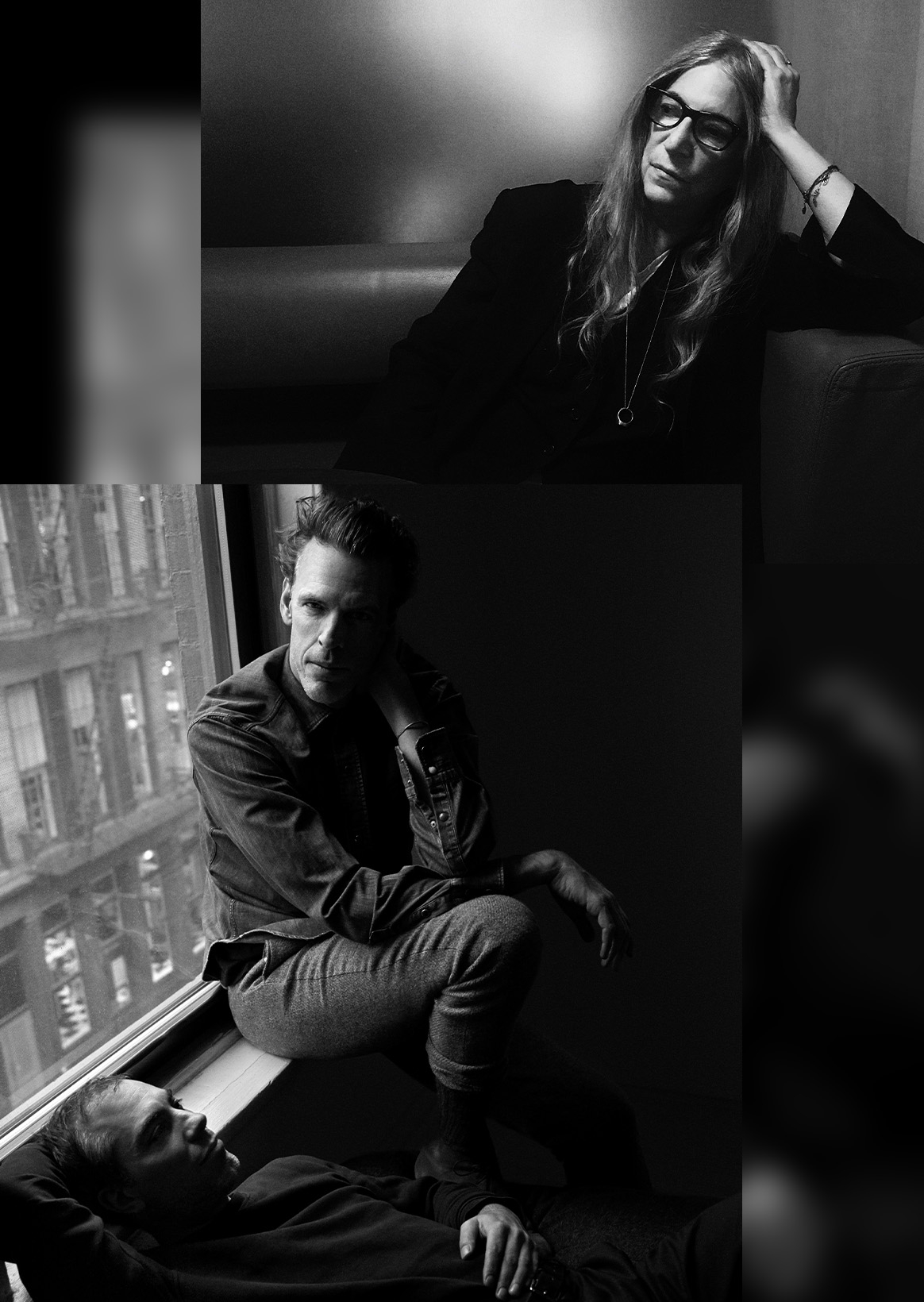Jean Jullien, a French artist who worked on the main visual for SHUBUYA PARCO ART WEEK 2021. In addition to providing illustrations to the New York Times, Vogue, etc., he has worked on many drawings as a writer. I asked him, who has a deep knowledge of Japanese manga culture, about his background in always creating pure and humorous works.
- Photo
- Warach Pattayanan
- Text
- Hiroyoshi Tomite
- Edit
- RIDE MEDIA&DESIGN inc.


——What kind of art influences?
I think it has been influenced widely, from the works of classical expressionist painters such as Vilar, Bernard, and Matisse to the comics of Moebius and Jack Kirby. In Japan, we are particularly influenced by Naoki Urasawa, Osamu Tezuka, Katsuhiro Otomo, Yoshihiro Tatsumi, and Yoshiharu Tsuge.
——How did you learn how to make your work?
When I started drawing, I studied French poster art in the 1950s, such as Rei Mon Saviignac, and works by Paul Rand and Saul Bass in the United States, and that was the mainstream. Despite their commercial medium, their work demonstrates creativity using drawings, and I think it's interesting. That's why I started to use a similar brush. Because I am aware of the limitations of my ability to draw, I want to create a work based on ideas and things I want to convey, not delicate pictures. Can I say that I use a brush that leaves room for mistakes?

——You want to create simpler works because you want to give priority to the ability to convey, right?
That's right. I want to draw a simple, honest and simple work as possible. That's why I focus on "what I want to convey" rather than "making a good picture". In the past, there were many cynical works. I'm making a political work with humor. You can watch it over time and not be aggressive.



——Why did you leave the city even though you were based in London after graduating from university?
In U.K., there is a word called "rat race" which means that we conduct a race for success like a mouse running around. I had a lot of life at the age of 25. So I made a lot of works there, but I decided to do something different at that time.
——So he left U.K. and moved to France. Is there no fear of challenges in a new city?
When I start something new, I’m always as excited as a kid. At the same time, I realized in a new place that everything didn't go as I expected. Actually, after graduating from university, I started sending an application for admission to an art school, but I was rejected by all schools. I thought I was useless because I didn't have talent, but I've been working all the time by putting out my work in the world. Fortunately, I was able to succeed and gain popularity from many people. From this experience, you can feel that it's okay to fail. In other words, if you want to continue to believe, it’s okay. Even if a person who criticizes the work appears, only if he likes the work.




——How have you been living lately?
Basically, I always live in Paris, but I often go home. I usually take a two-month vacation with my family, go to the beach to make it. I enjoy my life in front of you as much as I can. While many people are suffering from COVID-19, I feel uncomfortable with enjoying my life. But because people are suffering from COVID-19, I want to bring positiveness to people's lives while transmitting and displaying works on SNS.
——Is drawing a different language for linguistic expressions such as conversations?
That's right. Even if you don't understand French or English, you should be able to understand the work. I think that drawing is straightforward and direct. If my work is not transmitted, it is "the problem of my way of communicating."


——Did you change your mindset after the COVID-19 pandemic?
As you get older, it is natural that your way of thinking changes. I feel that the COVID-19 pandemic is a good signal that we should change our way of life. Now I want to live a more locally rooted way of life, and it should appear obediently in my work.
——What do you care about when you are creative?
To make good works, be honest. So I never make a comedy when I don't want to laugh. But if you want to make a joke about a mask, I will make it, and if you think "The sea this morning is beautiful", I will draw a picture of the sea. I make a graphic Novell if I think that it can't fit with a single picture. You can make a work that is better to make while worrying about what you want to make, and it is an important skill to not overdo it.

——What is this exhibition like?
What will be realized at the four exhibitions this time is to show a different perspective from the variations of my various works, and to show that there is no conflict. Among them, the solo exhibition at PARCO MUSEUM TOKYO and NANZUKA 2G is a central part of Tokyo's activities. The reason is that "Pocket Parents" at NANZUKA 2G is the beginning of a long-term project that will be rolled out around the world.
"Pocket Parents" treats my experience as a parent and recounts as a humorous story about getting older and growing responsibilities. Also, in Pocket parents, a small statue and a son's character appear, and they use various products to tell the story.


PARCO MUSEUM TOKYO will deal with another story “PAPER PEOPLE” that takes place in the same world as “Pocket Parents”. This is a reflection of the activities of drawing and painting. That's why first of all, there is a large painting landscape painting, and there are works depicting everyday life. This character wakes up one morning and realizes he has been abandoned by the author. I feel lonely that the author has stopped drawing and started painting. So this character draws another character himself, and he becomes a new author. While this story looks back on my drawing and painting career, I think it will show a variety of new ways of expression, including sculptures.

——It's a conceptual idea, isn't it?
I like visual translation that expresses something that has been there for a long time in different media. For example, if you make "Batman" into a manga or make a stuffed animal of "AKIRA", something different from the original is born. This process is interesting. Through visual translation, we plan to express small sculptures, large sculptures, and graphic Novell.
——It's interesting to approach people who come to Shibuya PARCO to buy clothes, isn't it?
It will be a good litmus paper in a way. It may be easy to attract interest if it is an exhibition where art is a hobby and has a clear purpose. However, it is more rewarding for those who do not know about me or my work to recognize the work. It's not because the other person is familiar with art, but because I feel that he was genuinely attracted to interest.

——What kind of feeling do you want to convey to visitors through the work?
In addition to what I just explained, there are paintings with motifs of the city and scenery of Bretagne where my parents' house is located, as well as outdoor works in Paris. From the perspective of Tokyo in Japan, I want people to feel like traveling through works that capture the scenery in the opposite world.

- Exhibition name
- PAPER PEOPLE
- Venue
- PARCO MUSEUM TOKYO (Shibuya PARCO 4F)
- Exhibition Period
- September 17 (Friday) - October 3 (Sunday), 2021
- Time
- 11:00〜20:00 ※Entrance is until 30 minutes before closing. Closed at 18:00 on the last day.
- Entrance fee
- General 700 yen / Student 500 yen / Elementary school students and younger free
- Organizer
- PARCO
- Curation
- NANZUKA
- ※Business days and times are subject to change from the viewpoint of preventing the spread of infectious diseases.
- Exhibition name
- POCKET PARENTS
- Venue
- NANZUKA 2G (Shibuya PARCO 2F)
- Exhibition Period
- September 17 (Friday) - October 3 (Sunday), 2021 11:00-20:00
- ※Business days and times are subject to change from the viewpoint of preventing the spread of infectious diseases.

© Timothée Chambovet
By Jean Jullien
Born in France in 1983. In addition to providing works to magazines and fashion brands as an illustrator, he also energetically produces paintings. He is also known for his deep knowledge of Japanese manga culture.
Instagram(@jean_jullien)




